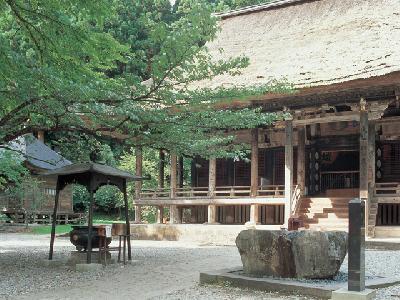|
Jion-ji Temple in located in Sagae, Yamagata prefecture. It is said that the monk Baramon established it in 746 on the orders of the Emperor Shōmu.
In the Edo period, it was given 2812 red seal-stones from the government and became one of the representative landmarks in the Tohoku area.
The Hondo (main temple) is built in the style of the Momoyama period and is designated a National Cultural Asset. There is a large collection of statues of bodhisattvas, which are also designated as important cultural assets.
In the cedar-forested mountain, there are various buildings including the Deva gate and a three-tiered pagoda. The classic statues of the Twelve Heavenly Generals have been exhibited overseas; their uplifting demeanors are memorable.
Every May 5th, a performance of Jion-ji classical music (bugaku) has been held annually for over 1200 years. There are 8 parts to the performance, which includes Enbu, Sanjyu, Taiheiraku and Ryouou.
In the Edo period, it was given 2812 red seal-stones from the government and became one of the representative landmarks in the Tohoku area.
The Hondo (main temple) is built in the style of the Momoyama period and is designated a National Cultural Asset. There is a large collection of statues of bodhisattvas, which are also designated as important cultural assets.
In the cedar-forested mountain, there are various buildings including the Deva gate and a three-tiered pagoda. The classic statues of the Twelve Heavenly Generals have been exhibited overseas; their uplifting demeanors are memorable.
Every May 5th, a performance of Jion-ji classical music (bugaku) has been held annually for over 1200 years. There are 8 parts to the performance, which includes Enbu, Sanjyu, Taiheiraku and Ryouou.
| [+ADDRESS] | 
|











